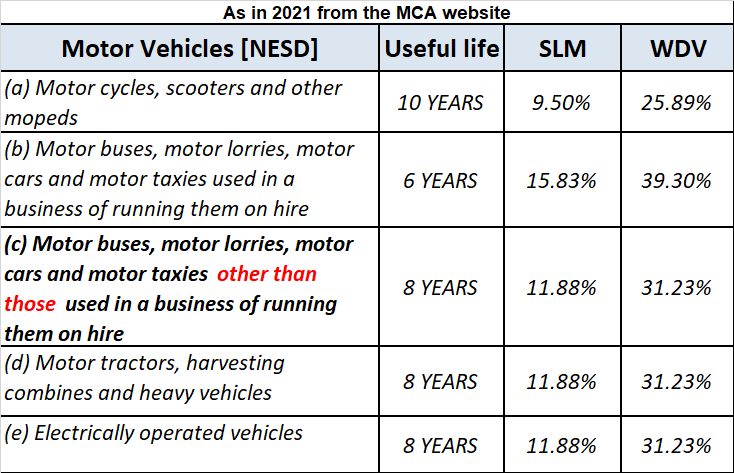Debit Balance A debit accounting entry represents an increase in asset or expense account or a decrease in liabilities of an individual or enterprise. Debit balance is the amount in excess of debit entries over credit entries in the general ledger. The debit balance is shown as Dr. Credit Balance ARead more
Debit Balance
A debit accounting entry represents an increase in asset or expense account or a decrease in liabilities of an individual or enterprise.
Debit balance is the amount in excess of debit entries over credit entries in the general ledger. The debit balance is shown as Dr.
Credit Balance
A credit accounting entry represents a decrease in assets or an increase in liabilities or income accounts of an individual or enterprise.
The credit balance is the amount in excess of credit entries over debit entries in the general ledger. The credit balance is shown as Cr.
Credit Balance in the Passbook
A passbook is a record of a customer’s account transactions kept by the bank. The passbook is a copy of the bank account of the customer in the books of banks. “Credit balance in the passbook is also called bank balance”.
The bank balance is the amount available for withdrawal. A bank balance is an asset to the individual or an enterprise which can be used for the purchase of another asset or payment of liability or expenses.
All the transactions either debit or credit are recorded in the passbook. When the total amount of all credit entries in a passbook is more than the total of debit entries, it results in a credit balance. It means that the bank owes to an individual or enterprise.
The amount withdrawn by a customer from the bank is shown as a debit entry and the amount deposited by the customer is shown as a credit entry. The passbook’s credit balance is a positive or favourable balance while the passbook’s debit balance is a negative balance or unfavourable balance.
For example: An individual deposited $50,000 in a bank account and withdrew a total sum of $30,000. So here, the passbook will show a bank balance of $20,000 i.e. the credit balance of the passbook. It signifies the positive cash flow of the individual and that the bank owes $20,000 to the individual.
Debit balance in Pass Book
When the total amount of all debit entries in a passbook is more than the total of credit entries, it results in a debit balance. Debit balance in the passbook is also called “Overdraft”. It means that an individual or enterprise owes to the bank.
Reconciliation
It is the process of identifying and rectifying differences between the passbook and cashbook maintained by the bank and customer respectively. The aim is to ensure the accuracy of the transaction recorded in the cashbook and passbook.
Debit Balance Reconciliation
The debit balance in the cashbook and the credit balance in the passbook shows that some outstanding cheques are in the process of clearing and these cheques need to be adjusted for reconciliation of the balance of the passbook and cashbook.
Credit Balance Reconciliation
The credit balance in the cashbook and debit balance in the passbook shows that deposits already recorded in the cashbook are yet to be recorded in the passbook by the bank and these deposits need to be adjusted in the passbook for reconciliation of the balance of the passbook and cashbook.
Conclusion
The debit and credit balance of the passbook is the indicator of the financial position of an enterprise or individual. A credit balance signifies more deposits than withdrawals resulting in a positive bank balance.
See less
















Accrued expenses are those expenses that have already been incurred but not paid. The business has already received the benefit of these goods or services but is yet to pay for them. For example, X Ltd took an insurance policy on 30th September 20XX. The premium is to be paid annually on 30th SeptemRead more
Accrued expenses are those expenses that have already been incurred but not paid. The business has already received the benefit of these goods or services but is yet to pay for them.
For example,
Why does the concept of accrued expenses arise in accounting?
The concept of accrued expenses arises in accounting because accounting records transactions on an accrual and not cash basis.
Accounting on an accrual basis implies recording transactions as and when they are incurred while recording transactions on a cash basis means recording them as and when cash is actually paid for receiving those services.
For example,
Treatment of Accrued Expenses
Accrued expenses are classified as current liabilities. That is because the business has a short-term obligation to pay these expenses. The other party has a legal right to receive the amount due. In other words, accrued expenses become payable in the near term.
As current liabilities, accrued expenses are carried in the balance sheet on the liabilities side. They are also recognized in the income statement as an expense as per the concept of accrual basis of accounting.
Conclusion
Accrued expenses are the expenses for which the business has already received the benefit of goods or services but which are payable in an accounting period other than the one in which such benefit is received.
As per the accrual basis of accounting, they are recognized in the year in which the expense is incurred. The expense is carried forward as a current liability until the period in which it is actually paid.
See less